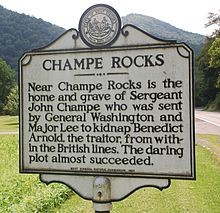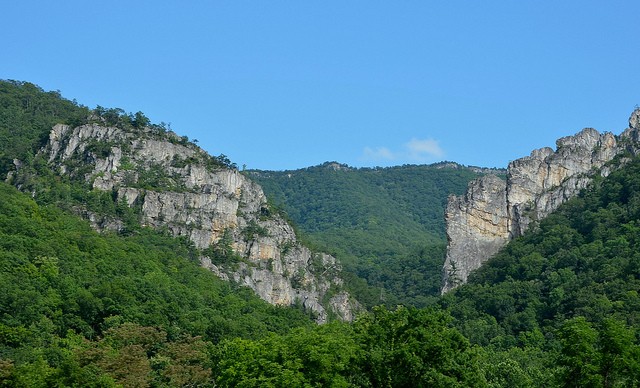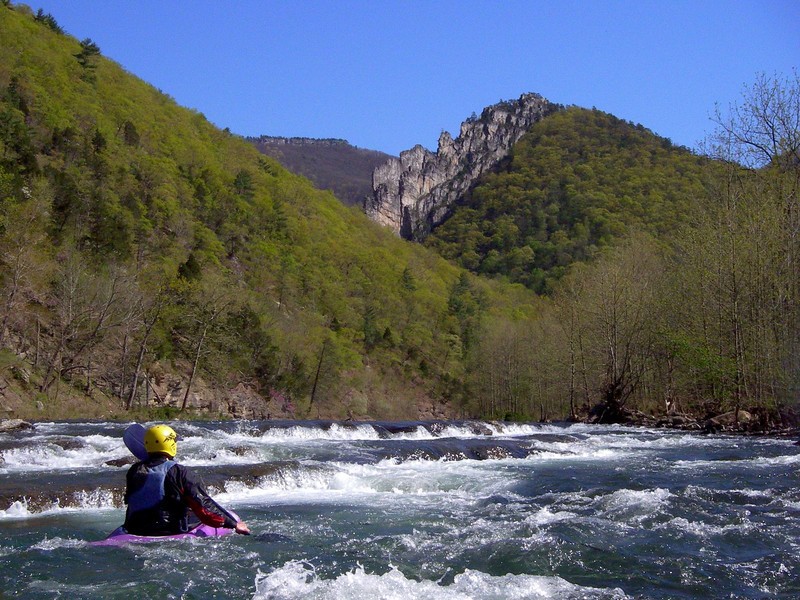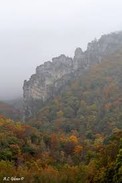Champe Rocks Historical Marker
Introduction
Text-to-speech Audio
This historical marker relates the history of the rock formations named in honor of John Champe, a soldier during the Revolutionary War. The rocks reach 2,257 feet above sea level and were part of the West Virginia Maneuver Area during the early 1940s, a site used to train members of the United States military as mountaineers.
Images
John Champe historical marker near Champe Rocks

View during Summer

View from the river

View in the Fall

Backstory and Context
Text-to-speech Audio
John Champe was a sergeant during the Revolutionary War and lived near this marker. Champe was tasked by General George Washington and Major Lee to kidnap Benedict Arnold. At the time, Benedict Arnold was across British lines, and although the mission almost succeeded, it ultimately failed. During the plot, Champe acted as an American deserter in order to join the ranks of the British army. He was forced to abandon the mission hours before the capture due to the reassignment of Arnold. Arnold was to command an assault on Virginia with Champe among his ranks. Sergeant Champe eventually escaped since the opportunity to capture Arnold had passed.
During World War II, Champe Rocks were used along with several other rock formations as American military training camps. The United States military observed how similar the West Virginia mountains were to those in Italy. The soldiers that trained here became known as the Mountain Training Group and were also known as ski troopers or snow soldiers. Along with rock climbing, soldiers were able to take nearby classes to learn how to use pack mules and carrier pigeons.
During World War II, Champe Rocks were used along with several other rock formations as American military training camps. The United States military observed how similar the West Virginia mountains were to those in Italy. The soldiers that trained here became known as the Mountain Training Group and were also known as ski troopers or snow soldiers. Along with rock climbing, soldiers were able to take nearby classes to learn how to use pack mules and carrier pigeons.
Cite This Entry
Danial Field and Clio Admin. "Champe Rocks Historical Marker." Clio: Your Guide to History. October 11, 2017. Accessed March 31, 2025. https://theclio.com/entry/26529
Sources
"Champe Rocks Topo Map, Pendleton County WV (Hopeville Area)." TopoZone Champe Rocks Comments. N.p., n.d. Web. 27 Sept. 2016.
"Share Champe Rocks." E-WV. N.p., n.d. Web. 27 Sept. 2016.
Whetsell, By Robert C. " ." WWII Assault Training at Seneca Rocks. N.p., n.d. Web. 27 Sept. 2016.

